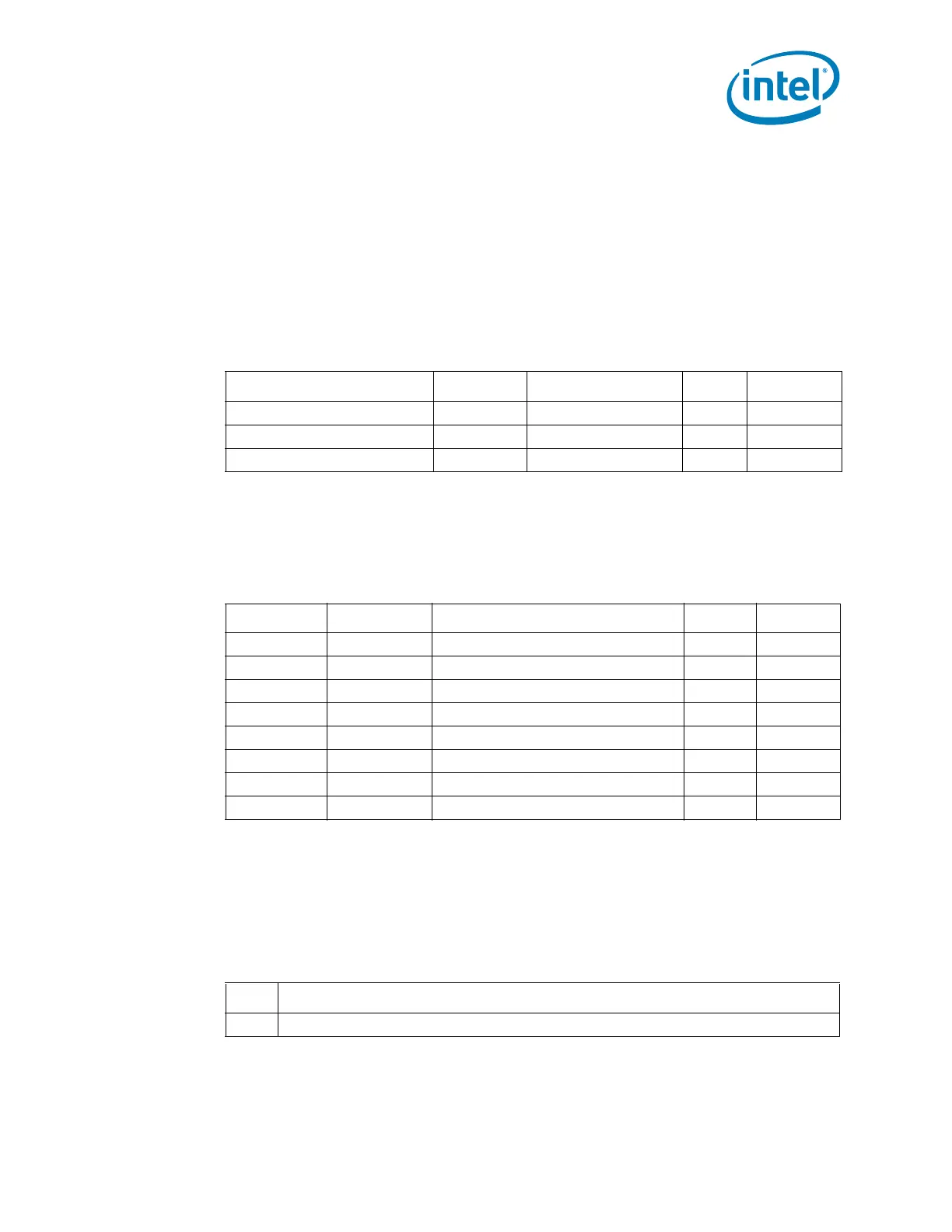Datasheet 493
LPC Interface Bridge Registers (D31:F0)
13.5 Advanced Programmable Interrupt Controller
(APIC)
13.5.1 APIC Register Map
The APIC is accessed using an indirect addressing scheme. Two registers are visible by
software for manipulation of most of the APIC registers. These registers are mapped
into memory space. The address bits 19:12 of the address range are programmable
through bits 7:0 of OIC register (Chipset Config Registers:Offset 31FEh) The registers
are shown in Table 13-4.
Table 13-5 lists the registers which can be accessed within the APIC using the Index
Register. When accessing these registers, accesses must be done one DWord at a time.
For example, software should never access byte 2 from the Data register before
accessing bytes 0 and 1. The hardware will not attempt to recover from a bad
programming model in this case.
13.5.2 IND—Index Register
Memory Address FEC_ _0000h Attribute: R/W
Default Value: 00hSize: 8 bits
The Index Register will select which APIC indirect register to be manipulated by
software. The selector values for the indirect registers are listed in Table 13-5. Software
will program this register to select the desired APIC internal register
.
Table 13-4. APIC Direct Registers
Address Mnemonic Register Name Size Type
FEC_ _0000h IND Index 8 bits R/W
FEC_ _0010h DAT Data 32 bits R/W
FEC_ _0040h EOIR EOI 32 bits WO
Table 13-5. APIC Indirect Registers
Index Mnemonic Register Name Size Type
00 ID Identification 32 bits R/W
01 VER Version 32 bits RO
02–0F — Reserved — RO
10–11 REDIR_TBL0 Redirection Table 0 64 bits R/W, RO
12–13 REDIR_TBL1 Redirection Table 1 64 bits R/W, RO
... ... ... ... ...
3E–3F REDIR_TBL23 Redirection Table 23 64 bits R/W, RO
40–FF — Reserved — RO
Bit Description
7:0 APIC Index — R/W. This is an 8-bit pointer into the I/O APIC register table.

